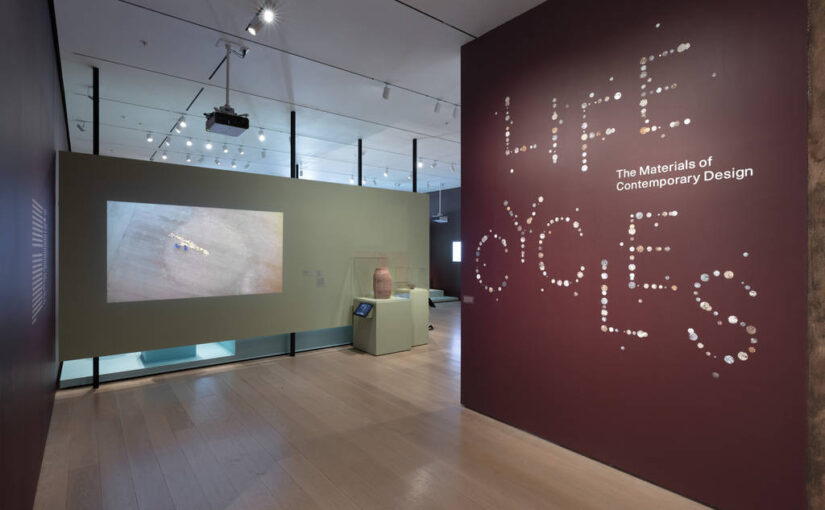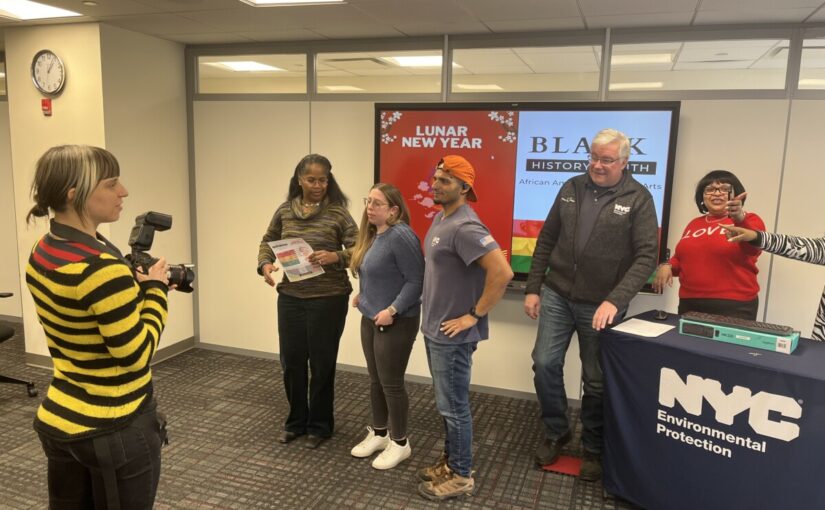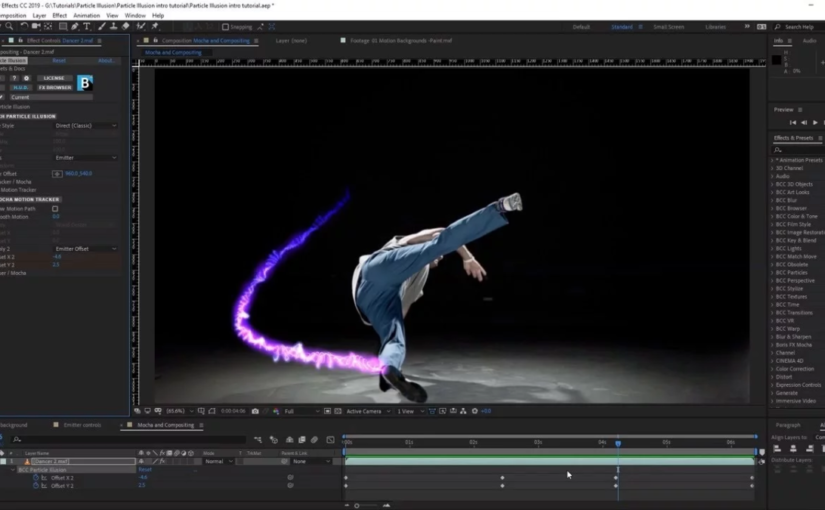During my internship at DEP and almost a year of employment, I have not encountered anyone whom I would consider a mentor to look up to.
Blog
Career Development Workshop
I had the privilege of attending a career development workshop that was organized by the Saint George’s Society of New York at Lehman College in the Bronx. The workshop was designed to provide valuable insights and guidance to job seekers like me who are looking to enhance their career prospects. I was excited to attend this event as I had never been to a workshop of this kind before.
As a college student on the cusp of entering the workforce, I knew that attending a career development workshop would be a crucial step in preparing for my professional journey. The workshop I attended promised to cover a wide range of topics, including resume building, interview skills, and networking strategies – all areas where I knew I could use some guidance.
During the workshop, I was introduced to my mentor, who will be coaching me throughout my career development journey. I was thrilled to meet my mentor as I believe that her expertise and guidance will be invaluable in helping me achieve my career goals. In addition to my mentor, there were several other mentors who were present at the workshop, all of whom are part of the Saint George’s Society.
The workshop covered a wide range of topics related to career development, including resume writing, interview skills, networking, and job search strategies. The speakers were all highly experienced professionals who shared their insights and experiences with us. I found the workshop to be very informative and inspiring, and I left feeling more confident and motivated than ever before.
Attending the career development workshop was not just about acquiring practical skills – it was also a journey of personal growth. I gained confidence in my ability to navigate the job market, discovered new avenues for career exploration, and forged meaningful connections with fellow attendees and workshop facilitators.
One of the most empowering aspects of the workshop was the emphasis on setting clear, achievable career goals. Through guided exercises and discussions, I was able to identify my strengths, interests, and aspirations, and create a roadmap for achieving my professional objectives.
Armed with the knowledge and insights gained from the workshop, I feel better equipped to take on the challenges of transitioning from college to the professional world. I plan to continue honing my skills, expanding my network, and pursuing opportunities that align with my career goals.
Overall, attending the career development workshop hosted by the Saint George’s Society of New York at Lehman College was an incredible experience. I am grateful for the opportunity to have attended this workshop and for the invaluable guidance that I received from my mentor and the other mentors who were there.
Museum
I went to MOMA to see an exhibit, something I don’t normally do. This was the second time that I went to the MOMA to see an exhibit. I have been volunteering at Saint Thomas Church for a while now before the pandemic shut it down and I have passed by MOMA, back then was when I visited it. It was a good day, and it was nice. The exhibit was lovely to see and I learned a lot from being there and learning as much as I can.
I went to see “Life Cycles: The Materials of Contemporary Design,” an exhibition that examines how design can be elegant and innovative while also responsible and respectful of other ecosystems. On view in the Museum’s street-level gallery from September 2, 2023, through July 7, 2024, this exhibition of approximately 80 contemporary design works from MoMA’s collection looks at how some 40 designers are considering the full life-cycles of materials—from extraction to recycling, upcycling, or disposal. The exhibition investigates the fundamental role design can play in translating current environmental considerations into sophisticated and informed responses.
‘Life Cycles: The Materials of Contemporary Design’
Composed of some 80 objects from 40 design and art practitioners (and almost entirely pulled from MoMA’s collection), the show is both a prompt and a continuation of a thread. As the title itself lays out, it’s an exploration of materials and their lifespan – with time being of the literal essence. This go-around, it’s a consideration of how these materials function from extraction to use/reuse to disposal. Says Antonelli, ‘It’s about rereading [these works] in the context of today, in the context of the environmental crisis, and new ways to build and new ways to design.’ She is the senior curator at the museum.
Out from the archive comes iconic pieces of design like Nendo’s Cabbage Chair, 2007, and Tomáš Gabzdil Libertíny’s The Honeycomb Vase “Made by Bees,” 2006, originally acquired for their novel materiality. The Cabbage Chair, made from by-product paper waste from Issey Miyake’s fabric pleating process, is a lesson in circularity; while The Honeycomb Vase, produced entirely from bees themselves, is the embodiment of zero-waste.
I think the exhibit is a great showcase of how designers are incorporating environmentally friendly practices in their work. Currently, our planet is being destroyed, and it seems like our government is not doing enough to address this issue. As designers, I believe we have a moral responsibility to be mindful in our approach to design. By using materials that can be recycled or disposed of responsibly, we can create new and amazing things. There is beauty in everything that can be repurposed. Design is a very powerful force to be reckoned with and a tool to change the way things work in the world by changing people’s behaviours.
Ethics Scenario 2
You are working as an Art Director for a publication what has a long history of strong reporting and careful fact-checking. One night, the Executive News editor comes to your office to demand that you release a story to the printer and upload it to the magazine’s website without the copy department reviewing it . This is not the typical workflow the company follows and you do not report to the Executive News Editor but to the Creative Director.
The Executive News Editor reports to the Editor in Chief who is traveling internationally and not available. The Creative Director, your boss, reports to the Publisher but the Creative Director has left for the day already for a family emergency and the Publisher is not available either.
The Executive News Editor is definitely on a higher level in the organization than you are but his request is NOT following the accepted protocol and you are concerned that the story has not been properly fact-checked and proofread. What do you do in this ethical dilemma?
In this scenario, I would uphold the publication’s commitment to strong reporting and careful fact-checking, which are fundamental to maintaining credibility and trust with readers.
Politely but firmly express your concerns to the Executive News Editor about deviating from the standard workflow and the potential risks of publishing a story without proper review.
Since your direct supervisors are unavailable, consider reaching out to other senior staff members or colleagues for advice on how to proceed ethically.
Keep records of your conversation with the Executive News Editor and any subsequent actions taken, ensuring transparency and accountability.
If the Executive News Editor insists on proceeding despite your concerns, consider escalating the issue to higher management or the Editor in Chief upon their return, emphasizing the importance of upholding ethical standards in journalism.
Overall, prioritize the publication’s integrity and adherence to established protocols, even in the face of pressure from higher-ranking individuals. Your commitment to ethical conduct is essential in maintaining the publication’s reputation and credibility.
Ethics Scenario 1
You are hired as a freelance designer for a new streetwear start-up and they have asked you to design a logo for their company. The client has very strong ideas about the type of logo they want for their company and they have specifically shown you the work of a particular designer whose work they want you to use as inspiration for the streetwear logo. In fact, the owner shows you a sketch of the logo and it looks very similar to the designer’w work. Do you use the designer’s work as a basis for your logo or do you go to the designer to ask for permission to do so?
In this scenario, it’s essential to navigate the ethical considerations involved in using another designer’s work as inspiration for the logo you’re creating for the streetwear start-up.
It’s important to recognize that the original designer’s work is their intellectual property, and using it without permission could potentially infringe upon their rights. Even if the client has provided the inspiration and requested something similar, it’s your responsibility as a designer to ensure that your work respects the rights of others.
Upholding professional integrity involves being transparent and honest in your work. If you directly use another designer’s work as the basis for the logo without seeking permission or giving credit, it could undermine your credibility as a designer and lead to potential legal issues.
While the client has provided a specific vision and reference for the logo, it’s important to communicate with them about the ethical implications of directly replicating another designer’s work. You can explain the importance of originality, respect for IP rights, and the potential consequences of using someone else’s work without permission.
Instead of directly replicating the designer’s work, you can propose alternative design solutions that capture the essence and aesthetic the client desires while ensuring originality and avoiding potential legal issues. This approach demonstrates your creativity and professionalism while respecting the rights of other designers.
In summary, it’s crucial to prioritize ethical considerations, including respect for intellectual property and maintaining professional integrity, when faced with a situation where the client requests a logo similar to another designer’s work. Communicating openly with the client and offering alternative design solutions can help navigate these ethical challenges effectively.
Podcast Review
The podcast episode features Brian Lehrer of WNYC hosting a special series with Michelle Singletary, a personal finance columnist from The Washington Post. The series focuses on “Money Milestones for Every Age,” with this episode specifically addressing financial advice for people in their 20s.
Singletary offers guidance on various financial topics pertinent to young adults, including:
Credit Cards in Your 20s: She advises against obtaining credit cards while in college, instead suggesting the use of cash or debit cards to avoid accumulating debt. Upon nearing graduation, individuals can consider applying for a secured credit card to establish credit responsibly.
Moving in with a Partner: Singletary emphasizes the importance of establishing a cohabitation agreement when living together without marriage. This document outlines financial responsibilities, division of expenses, and procedures in case of a breakup.
Managing Finances During Unemployment: A caller named Alex seeks advice on managing finances while unemployed but financially responsible for family members. Singletary stresses the importance of prioritizing one’s financial stability first before helping others, drawing an analogy to the oxygen mask on an airplane.
Parenting and Tough Love: Another caller, Monique, shares her experience of tough love in parenting and how it contributed to her daughter’s fiscal responsibility. Singletary underscores the importance of discernment in parenting, balancing assistance with allowing children to face consequences and learn financial responsibility.
Health Insurance at Age 26: Singletary discusses the options for obtaining health insurance after aging out of parents’ plans at 26. She recommends exploring the health insurance marketplace, particularly for those with lower incomes who may qualify for subsidies to make coverage more affordable.
Throughout the episode, Singletary provides practical advice grounded in personal finance principles, emphasizing the importance of financial responsibility, open communication, and informed decision-making, especially for young adults navigating various financial milestones.
Self Evaluation
During my time as a graphic designer at the Department of Environmental Protection (DEP), I have strived to contribute my creative skills and expertise to support the department’s communication and outreach efforts. Through my passion for design and commitment to excellence, I have aimed to visually convey the importance of environmental protection and sustainability.
I have produced a variety of visual communication materials to support DEP’s initiatives and campaigns. This includes designing brochures, posters, infographics, and digital content.
I have demonstrated creative problem-solving skills in tackling design challenges and finding innovative solutions. I have approached each project with creativity and resourcefulness.
I have actively sought feedback from stakeholders and colleagues to continually improve my design work. By incorporating feedback and iteratively refining designs, I have ensured that final deliverables meet both aesthetic and strategic objectives.
My experience as a graphic designer at the Department of Environmental Protection has been enriching and fulfilling. I am proud of the contributions I have made to DEP’s communication efforts and the impact of my design work in raising awareness about environmental issues. Moving forward, I am committed to continuous learning, growth, and innovation in my role as a graphic designer dedicated to promoting environmental stewardship and sustainability.
Collaborative Project
In February, during Black History Month, I was part of a team that worked on a presentation that we had to deliver to the employees of the DEP department. The presentation was about both the Chinese New Year and Black History Month. My team member Jasmin and I were tasked with creating separate PowerPoint presentations, one for the Chinese New Year and the other for Black History Month. I worked on the Black History Month presentation, while Jasmin worked on the Chinese New Year presentation. We had to combine our presentations into one, which required a lot of coordination and collaboration.
It took us a couple of weeks to research and gather all the necessary information to create our presentations. Jasmin and I worked hard to ensure our presentations were engaging and informative. On February 27th, we both presented our combined presentation to the DEP employees. We worked closely to ensure the presentation flowed smoothly, and we were able to maintain the audience’s attention throughout.
After the presentation, we received a lot of feedback from our boss and coworkers who attended the event both in person and online through a Teams meeting. It was a great experience working with Jasmin, and we received many compliments on our presentation. We were proud of the work we had done, and it was an excellent opportunity to showcase our skills and knowledge.
App Review After Effects
I’d be happy to help you with that. Please find below a clearer and error-free version of the text you provided:
Transforming Ideas into Cinematic Realities: A Deep Dive into Adobe After Effects
When it comes to post-production wizardry and visual storytelling, Adobe After Effects stands as an undisputed champion in the realm of desktop applications. As an integral part of the Adobe Creative Cloud suite, After Effects has earned its stripes as the go-to software for motion graphics, visual effects, and dynamic video editing.
In this review, we’ll take a closer look at After Effects and explore why it continues to be an indispensable tool for filmmakers, animators, and content creators. Here are some of its key features:
1. Intuitive Interface and Workflow: After Effects has a sleek and user-friendly interface, making it easy for both beginners and seasoned professionals to use. The familiar Adobe design language ensures a smooth transition for those accustomed to other Creative Cloud applications. The well-organized panels, customizable workspaces, and timeline-based workflow make navigating complex projects a breeze.
2. Dynamic Motion Graphics and Visual Effects: After Effects has robust motion graphics and visual effects capabilities that enable users to create stunning animations, title sequences, and dynamic visual elements. The integration of the Puppet Tool, Expressions, and a wide array of effects plugins empowers artists to push the boundaries of creativity and deliver visually captivating content.
3. Advanced Animation and Keyframing: After Effects is a powerhouse when it comes to animation. Its keyframing and animation tools offer precise control over movement, timing, and easing. The graph editor allows for fine-tuning animation curves, ensuring smooth and natural motion. Whether animating characters, objects, or text, After Effects provides the flexibility and control needed to bring ideas to life with cinematic flair.
4. Seamless Integration with Adobe Ecosystem: As part of the Adobe Creative Cloud family, After Effects seamlessly integrates with other Adobe applications like Premiere Pro, Photoshop, and Illustrator. This interconnected ecosystem streamlines the post-production process, allowing for easy collaboration and a more efficient workflow. Dynamic Link enables users to move between applications seamlessly, maintaining project integrity and accelerating the editing process.
5. 3D Animation and Camera Tracking: After Effects isn’t limited to two-dimensional magic; it also boasts impressive 3D animation capabilities. The 3D workspace and camera tracking features open up a new dimension of possibilities, allowing users to integrate 3D elements into their compositions with realism. This feature is particularly valuable for creating immersive visual effects and engaging motion graphics.
6. Constant Updates and Community Support: Adobe After Effects is a product of continuous improvement. Regular updates bring new features, enhancements, and performance optimizations. The active and vibrant community surrounding After Effects ensures that users have access to a wealth of tutorials, plugins, and resources, fostering a collaborative environment for learning and problem-solving.
In conclusion, Adobe After Effects remains an unparalleled tool for those seeking to elevate their visual storytelling and animation endeavors. Its intuitive interface, powerful motion graphics and visual effects capabilities, seamless integration within the Adobe ecosystem, and commitment to innovation make it a staple for professionals and enthusiasts alike. With After Effects, the journey from creative concept to cinematic reality is not just a process—it’s an exhilarating visual adventure.
App Review Cinema 4D
Unleashing Creativity with Cinema 4D: A Powerful Desktop App for 3D Design
Cinema 4D is a respected and highly regarded tool in the world of 3D design and animation. It’s a versatile platform that empowers digital artists, animators, and designers to unleash their creativity. In this review, we will explore the key features and strengths of Cinema 4D that make it a standout choice for 3D content creation.
1. Intuitive User Interface:
Cinema 4D has a sleek and user-friendly interface that makes it accessible to both beginners and professionals. The layout is well-organized, and users can customize the panels to suit their specific needs. Whether you’re sculpting intricate details or animating dynamic scenes, the interface ensures a smooth and efficient workflow.
2. Powerful Modeling Tools:
Cinema 4D’s modeling tools are robust and powerful. The application allows users to bring their ideas to life with precision, from simple shapes to complex structures. The intuitive sculpting tools make organic modeling easy, while the parametric modeling capabilities provide flexibility and control over every element.
3. Advanced Animation Capabilities:
Cinema 4D is renowned for its animation features. It supports a wide range of animation techniques, including keyframing, character rigging, and dynamic simulations. With MoGraph, a powerful motion graphics module, users can create intricate and visually stunning motion graphics with ease.
4. Realistic Rendering:
Cinema 4D’s built-in rendering engine delivers exceptional visual quality. The application can simulate realistic lighting, shadows, and textures, adding authenticity to 3D scenes. The interactive preview render feature enables artists to fine-tune their creations in real-time, ensuring the final output meets their vision.
5. Seamless Integration with Other Software:
Cinema 4D understands the collaborative nature of creative projects and seamlessly integrates with other industry-standard software. Whether you’re working with Adobe After Effects for post-production or incorporating 3D models into a gaming environment, Cinema 4D’s compatibility ensures a smooth workflow and efficient collaboration.
6. Constant Innovation and Updates:
Maxon, the creators of Cinema 4D, are committed to pushing the boundaries of 3D design. The software reflects this dedication with regular updates and feature enhancements. Cinema 4D stays abreast of industry trends and introduces new tools and functionalities to keep users at the forefront of 3D innovation.
In conclusion, Cinema 4D is a powerful tool that empowers artists and designers to bring their creative visions to life in three dimensions. Its intuitive interface, powerful modeling and animation tools, realistic rendering capabilities, seamless integration, and commitment to innovation make it a go-to choice for professionals and enthusiasts alike.







